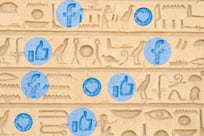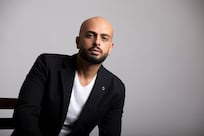Forty-seven per cent of respondents to the survey believe relations between Sunni and Shia have worsened.
A majority – 52 per cent – singled out the divide as a significant factor leading to unrest in the Arab world, while that number climbed to 75 per cent among participants from the GCC.
Among the countries most likely to say Sunni-Shia relations have worsened were Yemen (88 per cent), Jordan (84 per cent), Libya (75 per cent) and Iraq (62 per cent).
The findings mirror the development of events in the region, said Abdulkhaleq Abdulla, political science professor at UAE University.
“On the ground, the sectarian divide has widened in recent years, and the fox-holing between these two large communities has never been any worse,” he said.
“Sectarianism is one of the problems in the Arab world. It’s not the sole cause of violence in the region – the politics are as important, if not more, than the ideological underpinnings of the sectarian divide in the region today.
“I think the youth are reflecting on the sentiment that this is not healthy for the region, this should not last for too long, and it shouldn’t have started.”
Just over half of the survey’s respondents said religion played too big a role in the Middle East. That number increased to 61 per cent for GCC nations.
While the Shia-Sunni divide was said to play a major role in unrest, the entrance of Iran into the top-10 list of regional allies was described as one of the biggest developments in this year’s findings.
Thirteen per cent of respondents named Iran as their country’s ally, compared with 31 per cent citing Saudi Arabia as their nation’s leading ally.
Forty-five per cent said they supported the agreement between Iran and the international community on Iran’s nuclear programme, while 39 per cent opposed the deal. Opposition was strongest in the Levant and Yemen.
Opinions towards the causes of the Syria conflict were divided, with 39 per cent describing the conflict as a proxy war between regional and global powers, 29 per cent as a revolution against the regime of Syrian president Bashar Al Assad, and 22 per cent as a civil war among Syrians.
esamoglou@thenational.ae
______
For more:
› Arab Spring legacy continues to fade in eyes of region's youth
› ISIL single biggest challenge facing Middle East, Arab youth say
› Graphic: Arab youth survey 2016 results
› Arab youth increasingly heading online for news, survey shows





